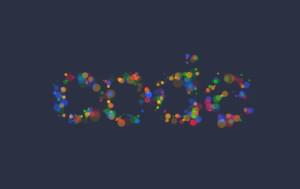An email newsletter is a brilliant way to stay connected to your customers or community members. Many people who visit your website may like it. Some may even love it, but if no one reminds them to keep visiting, those people may forget all about it. By inviting them to subscribe to a periodic newsletter, you can turn those site visitors into regulars, and TinyLetter makes it easy to get started in a matter of minutes.
TinyLetter is a free service that makes it extremely easy to setup an email newsletter, share it with subscribers, and even charge them a fee for your high-quality periodical content. TinyLetter is a subsidiary of MailChimp, but it uses a simplified interface and is designed for “distraction free” mass communication with your subscribers, rather than robust email marketing campaigns.
Creating a Newsletter
To get started with TinyLetter, follow these simple instructions:
1. Point your web browser to tinyletter.com
2. Click “Register”
3. Fill out the registration form, including your username, real name (yours or your organization’s), newsletter name, a brief description, your email address, and a password.
4. Click “create my account”
5. Click where it says “click here to get the embed code”. This will allow you to publicize it on your website.
6. Paste the embed code into your website’s code where you want it to appear.
Users should now be able to subscribe directly from your site. Alternatively, you can give them the direct link (tinyletter.com/your-username)
Frequently Asked Questions (FAQs) about Starting a Newsletter with TinyLetter
What are the key features of TinyLetter?
TinyLetter is a simple, free newsletter service owned by MailChimp. It offers a user-friendly interface, making it easy for beginners to start their own newsletter. Key features include the ability to personalize your newsletter design, track your subscribers, and view analytics such as open rates and click rates. It also allows you to save drafts, schedule newsletters, and send test emails. However, it lacks advanced features like segmentation and automation, which are available in other newsletter services.
How can I personalize my TinyLetter newsletter?
TinyLetter allows you to personalize your newsletter by customizing the design. You can change the color scheme, font, and layout to match your brand or personal style. You can also add images and links to make your newsletter more engaging. However, the customization options are quite basic compared to other newsletter services.
How can I track my subscribers on TinyLetter?
TinyLetter provides a simple dashboard where you can see the number of subscribers, unsubscribers, and the open rate of your newsletters. You can also see the click rate, which shows how many subscribers clicked on the links in your newsletter. This data can help you understand your audience better and improve your newsletters.
Can I schedule newsletters on TinyLetter?
Yes, TinyLetter allows you to schedule newsletters. This means you can write your newsletters in advance and set them to be sent out at a specific date and time. This feature can be very useful if you want to send your newsletters at peak times when your subscribers are most likely to read them.
Can I send test emails on TinyLetter?
Yes, TinyLetter allows you to send test emails. This means you can send a draft of your newsletter to yourself or a few select subscribers before sending it out to your entire list. This can help you catch any mistakes or issues before your newsletter goes live.
What are the limitations of TinyLetter?
While TinyLetter is a great tool for beginners, it does have some limitations. It lacks advanced features like segmentation, automation, and A/B testing. It also has a subscriber limit of 5,000, which means it may not be suitable for larger newsletters. Additionally, its customization options are quite basic compared to other newsletter services.
Is TinyLetter free to use?
Yes, TinyLetter is completely free to use. However, it does have a subscriber limit of 5,000. If you have more than 5,000 subscribers, you will need to upgrade to MailChimp, which has a range of paid plans.
How does TinyLetter compare to other newsletter services?
TinyLetter is simpler and more user-friendly than many other newsletter services. It’s a great tool for beginners or those who want to start a small, personal newsletter. However, it lacks the advanced features and customization options of other services. If you need more advanced features or have a large subscriber list, you may want to consider other options like MailChimp or ConvertKit.
Can I use TinyLetter for business newsletters?
TinyLetter is best suited for personal newsletters or small businesses. It’s simple and easy to use, but it lacks the advanced features that larger businesses may need. If you have a large subscriber list or need advanced features like segmentation and automation, you may want to consider other options like MailChimp or ConvertKit.
How can I improve my newsletters on TinyLetter?
To improve your newsletters on TinyLetter, focus on creating engaging content that your subscribers will find valuable. Use the analytics provided by TinyLetter to understand what your subscribers are interested in. You can also experiment with different designs and formats to see what works best. Remember, the key to a successful newsletter is providing value to your subscribers.
Lior is a consultant for Barilliance, a shopping cart abandonment company that provides services to websites from all over the world. He also advises BillGuard, a Passbook application company that created an app to follow credit charges from your phone.




